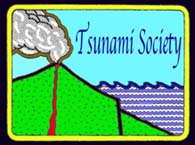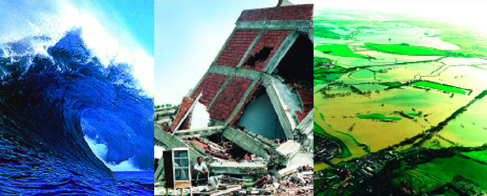EARLY DETECTION OF NEAR-FIELD TSUNAMIS USING UNDERWATER SENSOR NETWORKS
L. K. Comfort, T. Znati, M. Voortman, and Xerandy - University of Pittsburgh, USA
L. E. Freitag - Woods Hole Oceanographic Institution, USA
ABSTRACT
We propose a novel approach for near-field tsunami detection, specifically for the area near the city of Padang, Indonesia. Padang is located on the western shore of Sumatra, directly across from the Mentawai segment of the Sunda Trench, where accumulated strain has not been released since the great earthquake of 1797. Consequently, the risk of a major tsunamigenic earthquake on this segment is high. Currently, no ocean-bottom pressure sensors are deployed in the Mentawai basin to provide a definitive tsunami warning for Padang. Timely warnings are essential to initiate evacuation procedures and minimize loss of human life. Our approach augments existing technology with a network of underwater sensors to detect tsunamis generated by an earthquake or landslide fast enough to provide at least 15 minutes of warning. Data from the underwater sensor network would feed into existing decision support systems that accept input from land and sea-based sensors and provide warning information to city and regional authorities.
Vol. 31, No. 4, page 231 (2012)
--------------------------------------------
TSUNAMI MITIGATION PLANNING IN PACITAN, INDONESIA: a review of existing efforts and ways ahead (45.3 MB) Compressed (467 KB)
A. Muhari - Ministry of Marine Affairs and Fisheries (KKP), Jakarta 10110, INDONESIA
Disaster Control Research Center, Tohoku University, Sendai 980-8579, JAPAN
M. Mück - German Remote Sensing Data Center (DFD), German Aerospace Center (DLR), Wessling,GERMANY
S. Diposaptono - Ministry of Marine Affairs and Fisheries (KKP), Jakarta 10110, INDONESIA
H. Spahn - GIZ International Services, Jakarta 10310, INDONESIA
ABSTRACT
A small bay-town in East Java Province, Indonesia is selected as a pilot area for an integrated model of tsunami mitigation. Located at the south coast of Java, Pacitan is facing a seismic gap between two tsunami-earthquake events, which are the 1994 (M 7.2) and the 2006 tsunami (M 7.7). The efforts were started in 2008 by constructing the structural components in stages. Coastal forests development and the installation of land-based ocean radar were completed within 3 years. In line with these efforts, comprehensive risk assessment is now being conducted. Detailed tsunami simulations were carried out in addition to the preparation of vulnerability analysis. We attempted to establish novel risk assessment methods and products. We complete the countermeasures by planning two-year activities of community preparedness to ensure the sustainability of the above mentioned efforts. The key objective is the development of a comprehensive and coherent tsunami mitigation system on local level.
Keywords: Tsunami mitigation, Risk assessment, Numerical simulation, Decision support system, Capacity building
Vol. 31, No. 4, page 244 (2012)
----------------------------------------------
THE TOHOKU TSUNAMI OF 11 MARCH 2011 AS RECORDED ON THE RUSSIAN FAR EAST
G. V. Shevchenko - Institute of Marine Geology and Geophysics FEB RAS, Yuzhno-Sakhalinsk, RUSSIA
T. N. Ivelskaya - Sakhalin Tsunami Warning Center, Yuzhno-Sakhalinsk, RUSSIA
ABSTRACT
The source region of the catastrophic Tohoku tsunami of 11 March 2011 was near the Russian Far East, thus a warning was issued for threatened coasts of the Kuril Islands and Kamchatka. The tsunami was clearly recorded by a number of coastal tide gauges and by bottom pressure stations (including the Russian DART 21401). The recordings by these instruments were used to estimate the major characteristics of the tsunami waves, including arrival times, maximum heights, duration of signals and main wavelength periods. Further analysis indicated significant differences in the spectral characteristics of the waves propagating eastward toward North America from those directed in a northwest direction, towards the Russian Far East. The main peaks of the eastward propagating tsunami waves were of relatively high frequency, while those propagating in a northwest direction, were mainly of low frequency. At far-field stations, the resonant periods associated with local topographic effects were predominant in the spectra.
Keywords: tsunami, open-ocean DART station, coastal station, arrival time, maximum height, spectra, wavelet analysis
Vol. 31, No. 4, page 268 (2012)
----------------------------------------------
RESPONSE OF THE GDACS SYSTEM TO THE TOHOKU EARTHQUAKE AND TSUNAMI OF 11 MARCH 2011
Annunziato, G. Franchello, T. De Groeve - EC-Joint Research Centre (EC-JRC), Ispra, ITALY
ABSTRACT
The Tohoku Tsunami of 11 March 2011 was successfully identified and classified as Red alert by the GDACS system only when reliable and more correct estimations of the originating event have been provided to the system by the international seismological networks. Nevertheless the early analysis of the event by the comparison of the scenario calculations with the sea level could give important information on the real extent and impact of the Tsunami. The paper describe the response of the GDACS system and identify the lessons learned that determined changes in the logic and the procedures of the Tsunami calculations strategy.
Keywords: Early Warning Systems, Tsunami, Propagation, Inundation, Alerting
Vol. 31, No. 4, page 283 (2012)
-------------------------------------------------------------------------------------------------------------------------------------------




